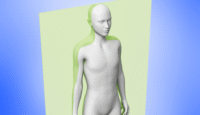Life was long gone from the cold, bloody corpse when the crime scene investigators arrived. The seasoned team soon confirmed the death was a murder, but no footprints, no fingerprints, no weapons were found–a few strands of hair caught in the dead woman’s broken fingernails were the only evidence the killer left behind.
Who’s the culprit? Ask your students. Teaching basic physiological science concepts is interesting from a forensics point of view. By incorporating a problem-solving approach to science education, teachers engage their students in exciting and innovative ways. Forensic labs also provide “real-world” applications of science and math.
Trichology is what?
Trichology is the scientific study of the structure, function, and diseases of human hair. Medical professionals, beauticians, and forensic scientists, among others, practice occupations within trichology. Hair is a valuable tool for forensic scientists. It is more resistant to decay than most other body tissues and fluids, thus remaining intact far longer than other evidence. This durability makes hair one of the most frequently found pieces of evidence at crime scenes.
A hair shaft is composed of 3 layers. The outer layer, or cuticle, consists of overlapping scales, with the free ends of the scales directed toward the tip of the shaft. Just beneath the cuticle is the cortex, made up of compact, elongated cells and often containing pigment granules. The central core of a hair shaft is the medulla, composed largely of air spaces.
Forensic scientists perform 3 major types of hair analysis: (1) testing the hair shaft for drugs or nutritional deficiencies in a person’s system, (2) analyzing DNA collected from the root of the hair, and (3) viewing hair under a microscope to determine if it’s from a particular person or animal. They usually study the hair’s scale pattern and appearance of the medulla to identify a hair of unknown origin.
Studying scale patterns
scientists study a cast of the hair shaft for determining scale pattern. The arrangement and shape of hair scales can vary greatly from species to species and are often very distinctive. Scientists usually classify scales into 1 of 3 categories:
- Coronal–Completely encircling the hair shaft
- Spinous–Long, narrow, and not encircling the hair shaft
- Imbricate–Short, wide, and not encircling the hair shaft
Turn your students into a CSI team and let them solve a “crime” using hair analysis. The forensic mystery will both engage and intrigue them while they learn science concepts.
Making a cast mount of a hair shaft
Materials
- Latex or Nail Polish
- 2 Microscope Slides
- Strands of Hair
- Forceps
- Microscope
Procedures
- Place a drop of latex near one end of a clean slide. Note: If you do not have latex, an alternate casting medium is nail polish. Brush a thin layer of nail polish in the middle of a clean slide.
- Tilt a second slide over the first (at approximately a 30° angle), ensuring that the slide ends farthest from the drop of latex are touching.
- Slowly pull the tilted slide over the first until it touches the drop of latex.
- Allow the latex to run along the edge of the tilted slide.
- With a smooth motion, push the tilted slide back along the first slide to spread the latex into a thin film.
- Immediately place several strands of hair on the film of latex or nail polish.
- Let the slide sit undisturbed for 10 to 15 minutes allowing the latex to harden. If using nail polish, wait until the polish is tacky-dry.
- Once the latex is hard or polish is nearly dry, use forceps to pull as much hair as possible off the slide (it is not necessary to remove every strand of hair).
- Examine the slide using only the low-power objective of a microscope. Note: Do not attempt to examine scale casts under the high-power objective. Look for impressions of individual scales and note the following features:
- Whether or not individual scales completely surround the hair shaft
- The general shape of an individual scale
- Whether the exposed edge of a scale is smooth or jagged
Studying the medulla
A whole mount allows study of the appearance of the medulla; however, a medulla is not always present in a hair. When medullae are present, they often show distinctive variations between species. The appearance of a medulla is classified as continuous (unbroken), intermittent (regular intervals), or fragmented (irregular intervals).
Making a whole mount of hair
Materials
- Microscope Slide
- Mountant or Water
- Strands of Hair
- Coverslip
- Forceps
- Microscope
- Paper (for drawing)
- Pencil (for drawing)
Procedure
- Obtain a clean microscope slide and place a drop of mountant or water on it.
- Place several strands of hair on the drop of mountant or water.
- Use forceps and slowly lower a coverslip onto the drop of mountant or water.
- Examine the slide under the low- and high-power objectives of a microscope. Examine several different sized hairs while noting any internal features such as granules or air spaces. Draw the hair showing the observed features.
Note: If you are using a mountant, keep the finished slide flat until the mountant hardens. To harden the mountant, heat the slide in an oven at 60° C for 1 day or leave at room temperature for several days.
Identifying hair
Identifying whether the hair is human or animal is the first step in forensic hair analysis. Human hairs usually have a thin (less than â…“ of the hair’s diameter) or an absent medulla region. Animal hairs usually have thick medullae (more than ½ of the hair’s diameter). Compare the photos below to what you see under the microscope.

The next step is comparing the found hair to known suspects or animals present at the crime scene. This analysis can be subjective based on the person’s experience at identifying the shape of the medulla. For beginning forensic students, simple identification of animal or human is sufficient. Using characteristics such as color, curliness, and thickness may help identify different human hairs.
The Hair Analysis Kit includes all supplies needed to make cast mounts and whole mounts of hair, including hair from animals and humans.
Extend your inquiry
Carolina offers many forensic kits that teach biology concepts in a fun, hands-on “ real-world” scenario. Following are some kits you may want to consider.
Microscope Forensics Kit
Students undergo forensic “training,” observing labeled slides of hair, blood, and textiles–materials forensic investigators typically find at a crime scene. After studying the known slides, students receive a mock murder mystery and crime scene “evidence.” They then examine the evidence, compare it to the suspects’ testimonies, and pinpoint the culprit.
The Case of the Murdered Mayor Kit
Students become crime scene investigators using their observational skills and deductive reasoning to solve this realistic crime scenario. Kit includes the following activities: dusting and lifting fingerprints, examining hair samples, analyzing impressions of tire tracks, blood typing with synthetic blood, examining entomological evidence and reviewing a police interview log.
Carolina® Forensic Dissection Kit
Students conduct a pig dissection, modeling the protocols a pathologist uses for a human autopsy. Upon completing the forensic dissection, students return the organs to the body cavity and suture the incisions. A Carolina’s Perfect Solution ® adult pig heart and pig kidney are also included for comparison with the dissected specimen. Students use a set of 7 prepared slides, extending and enhancing the dissection by examining tissue types found in each system.
Learn more
Carolina ’s extensive line of forensic science materials is ideal for teaching various concepts in science and math. These activities are also an engaging and innovative way to enhance your science curriculum. For more information about our vast array of kits and supplies, call 800.227.1150 or visit www.carolina.com.








